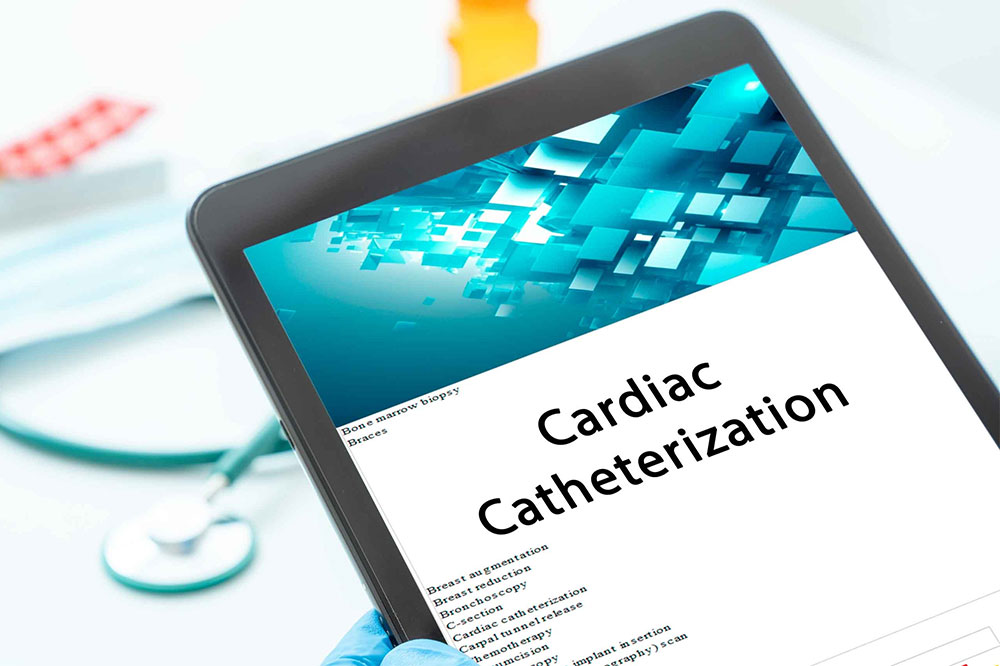Everything to Know About Heart Catheterization Procedure
Heart catheterization, better known as cardiac catheterization, is a procedure that helps diagnose and treat specific heart problems. This procedure allows the doctor or specialist to identify health issues and perform other tests or procedures for better clarity. For example, a heart catheterization procedure may be recommended in cases where patients have symptoms like irregular heartbeat and chest pain. Keep reading the article to learn more about this procedure and its purpose.
What is cardiac catheterization?
C ardiac catheterization, also called coronary angiogram, is an invasive procedure where a thin and long tube known as a catheter is inserted into a blood vessel.

Usually, this vessel is situated either in the upper thigh or other areas such as the groin, arm, or neck. The catheter is then slowly moved up to the blood vessels in the heart to examine the condition of the heart valves or to procure heart muscle samples. In addition to the above, the heart catheterization procedure may be performed instead of surgeries to replace heart valves and repair certain cardiac defects.
Who performs the heart catheterization procedure?
In most cases, this invasive procedure is performed by a trained specialist known as a cardiologist. However, while performing the cardiac catheterization procedure in a laboratory, the specialist will be accompanied by a team of nurses, technicians, and cardiology fellows.
Who performs the heart catheterization procedure?
In most cases, this invasive procedure is performed by a trained specialist known as a cardiologist. However, while performing the cardiac catheterization procedure in a laboratory, the specialist will be accompanied by a team of nurses, technicians, and cardiology fellows.
How does the heart catheterization procedure work?
In this procedure or test, a cardiologist employs a needle to place equipment, including a catheter, into the blood vessel. Following the insertion, the healthcare professional will inject contrast material through the catheter and create images as the contrast moves through the heart’s chambers, valves, and vessels.
These images allow the cardiologist to identify the underlying issue, such as the site of the blockage. Further, these images also provide additional information, such as the size and shape of the heart, thus helping to find holes in the heart or abnormal leaks in the heart valves.
However, to identify issues in various parts of the heart, one may have to go through different procedures – left heart catheterization and right heart catheterization. On the one hand, the proper heart catheterization procedure is performed to understand how well or poorly the heart is pumping. This is done by guiding the catheter to reach the pulmonary artery that carries blood to the lungs.
While on the other hand, during the left heart catheterization procedure, the catheter is guided through the blood vessels and into the aortic valve, which is situated on the left side of the heart. This procedure allows the healthcare provider to find potential blockages in the blood vessels that lead to the heart.
What are the most common uses of heart catheterization procedures?
As mentioned, heart catheterization procedures are performed to find or fix underlying health issues. Some of the most common tests and procedures that can involve catheterization include:
Angioplasty
The cardiologist will insert a catheter with a tiny balloon at the tip. This procedure involves balloon inflation to push the plaque out and widen the artery.
Valve replacement
In the case of a faulty aortic valve, the cardiologist may perform a minimally invasive procedure called a Transcatheter Aortic Valve Replacement ( TAVR) to replace the valve.
Heart defect repairs
Many people in the country and across the world experience cardiac issues. Some of these can be experienced from birth. For example, the specialist uses the cardiac catheterization procedure to repair the defect in such cases. This can also include leaks in the valves of the heart.
Stent placement
Some people can also experience cardiac issues such as a blocked artery. In such cases, the cardiologist uses a catheter and guides it into the artery to reach the blockage. Then, a small mesh tube called a stent is placed in the artery to keep the blood vessel open.
Biopsy
Heart biopsies are diagnostic procedures that involve using a catheter to remove a small amount of tissue from the inner lining of the heart muscles. Afterward, a pathologist in a laboratory looks for minute changes in the cells that can indicate abnormalities.
How to prepare for a cardiac catheterization procedure?
Before going through this invasive procedure, the cardiologist must know their entire medical history. Additionally, it’s suggested that the patient provides additional information such as allergies, especially if it involves iodine allergy, latex or rubber products allergy, and contrast agent allergy. In addition to the above, the patient must not consume food or water 6 to 8 hours before the heart catheterization procedure.
After the cardiac catheterization procedure is completed, the cardiologist will be able to identify the underlying issue and ascertain the next steps of the treatment involved. However, if one experiences problems such as shortness of breath, chest pain, dizziness, or fever, one must contact a healthcare professional as soon as possible.
Disclaimer:
The content of the articles discussing symptoms, treatments, health conditions, and side effects is solely intended for informational purposes. It is imperative that readers do not interpret the information provided on the website as professional advice. Readers are requested to use their discretion and refrain from treating the suggestions or opinions provided by the writers and editors as medical advice. It is important to seek the help of licensed and expert healthcare professionals when necessary.

